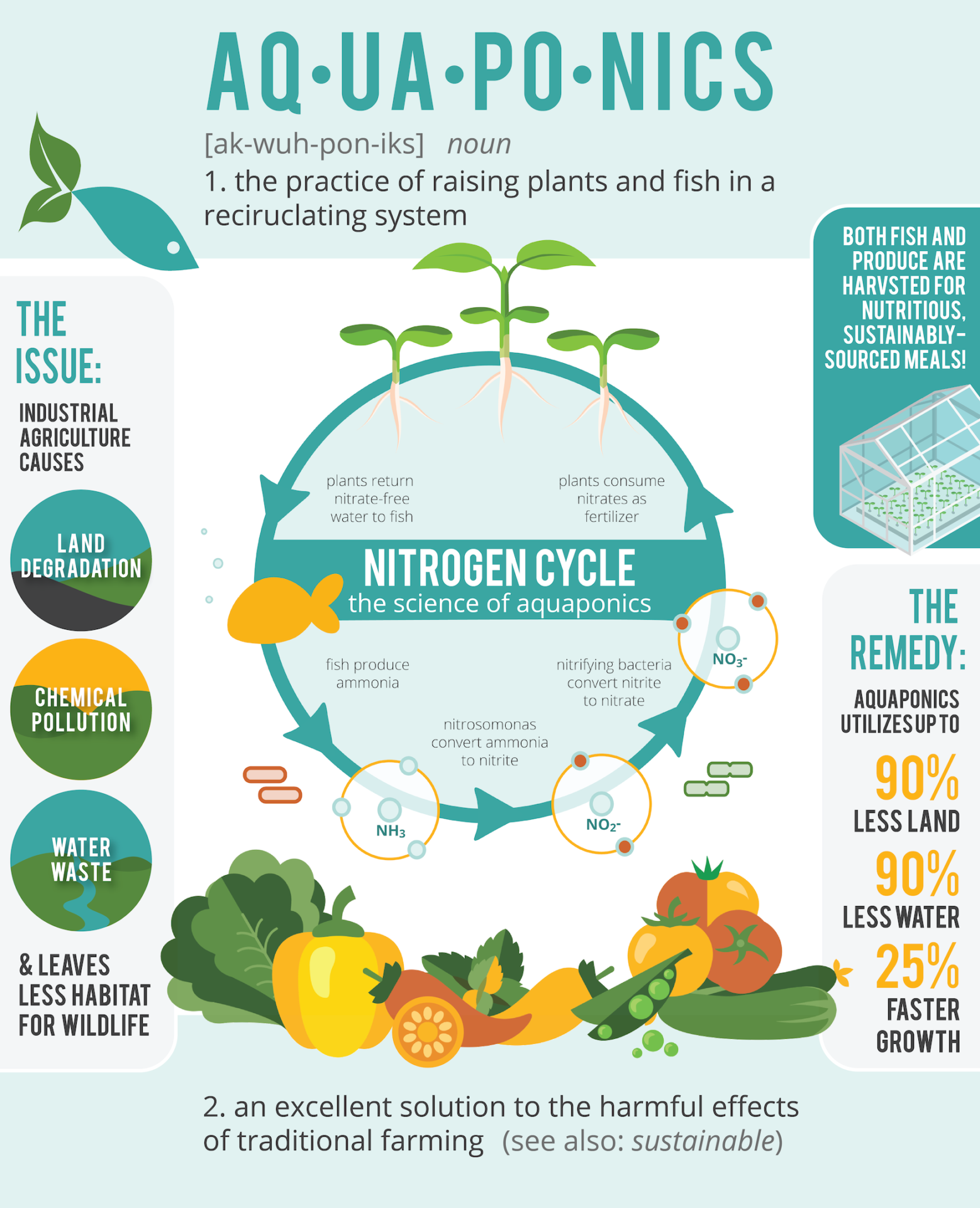A Better Way To Grow
Aquaponics allows us to grow produce with 90% less land and water while eliminating pollution from agricultural runoff.
The Issues
Reducing Habitat Destruction
We focus on sustainable agriculture because habitat loss is the main driver of species extinction. Agriculture occupies over 30% of all available land on Earth, destroying countless landscapes upon which species depend.
Eliminating Chemical Pollution & Pesticides
Without having to rely on harmful chemicals and pesticides in agriculture, we can grow safer, healthier food and prevent further deterioration of our lakes, streams, and watersheds.
Feeding a Growing Population
Rapidly growing populations and rising food insecurity call for a transition to more efficient methods of food production. We can safeguard our natural resources and improve community health by providing people with the means to grow nutrient-dense produce while using less land and water.
Our Solutions
Aquaponics in Action
Aquaponics is a sustainable method of food production combining aquaculture (raising aquatic animals) and hydroponics (cultivating plants in water with added nutrients). The synergy between plants, fish, and bacteria in aquaponics results in a 90% reduction in the amount of water and land space needed to grow an equivalent amount of produce in conventional soil-based agriculture.
In aquaponics, waste produced by fish is converted by bacteria into nitrate, the most accessible form of nitrogen for the plants. The plants in the system consume these nitrates, resulting in rapid growth and purified water for the fish. The closed-loop nature of aquaponics means that water and nutrients recirculate completely within the system, preventing runoff.
Through widespread adoption of sustainable agricultural methods like aquaponics, we have the opportunity to feed more people, prevent pollution, and reduce land and water use.
